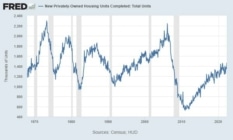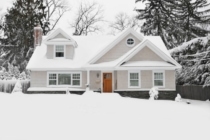
I pointed out that the property he was renting was worth about $2 million and that he was probably better off renting – IF he stayed in San Francisco.
His financial planner and I, however, both told him he should move to suburbia with his wife and newborn to take advantage of far more affordable housing.
And sure enough – that is exactly what he did.
He sacrificed the best Instagram background on the planet (huge for a millennial) to move to the Carmel Valley (the 2nd best Instagram background on the planet).
He was able to move 60 miles south without changing jobs b/c he is able to work remotely as a VP of Sales/Sales Manager without losing a beat.
TREND BACK TO SUBURBIA
My nephew’s story is not unique and is clearly part of a broader trend – and it will be hugely sped up by the COVID-19 crisis.
Large numbers of people are suddenly realizing that they can work remotely without issue, and avoid high rent and/or long commutes.
The same individuals are also realizing that they can avail themselves of much cheaper and possibly safer housing away from urban cores.
And this is exactly the trend that a Goldman Sachs Investment banker illuminated in this recent Exchanges at Goldman Sachs podcast.
DEMOGRAPHIC TAILWINDS NOT GOING AWAY
More important than his suburban-reemergence-prediction is his bullishness with respect to housing overall.
He cites the same data that I have cited in several previous blogs.
The millennial generation, ages 20 – 40, currently numbers about 70 million and it has much stronger household balance sheets than what we saw prior to the 2008 meltdown.
That age group typically has about a 65% home-ownership rate but they are currently at only 30%.
In addition, builders have not been keeping up with demand since the 2008 meltdown, so housing supply will not come close to matching housing demand (putting upward pressure on prices).
I have pointed this out numerous times now but I thought it was worth repeating for a few reasons: (1) the Goldman Sachs names gives the prediction a lot more weight; and (2) it should quell some of the concerns buyers might have in regard to the housing market overall.
The podcast I link to above is only 15 minutes long; I recommend listening to it and sharing it with any buyers who might have cold feet.
Jay Voorhees
Founder/Broker | JVM Lending
(855) 855-4491 | DRE# 1197176, NMLS# 310167
























